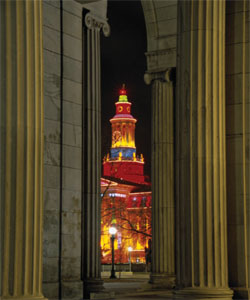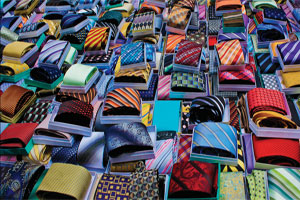A New Lens on Life
Photography Draws Robert Anderson to New York
By Dan Meyers

Finally, the man climbs into his own car and drives the short distance to the University of Colorado School of Medicine. There, he slips into his white coat—and into his other world, the one where he sees patients and teaches students. The one where he’s Robert Anderson, MD, chairman of the Department of Medicine.
Or, was — Anderson has just retired, after serving 41 years at the medical school. The search is on for his replacement.
Anderson, 66, is conducting a search of his own — for a space in Manhattan where he can set up a photography gallery featuring his own award-winning work and that of others. The hope is to break even in two years. New York, he says, is the place to be for galleries — and for photographing street scenes.
A colorful past
It will surprise nobody who knows Anderson that he intends to prowl the big city just as he did the mountains of the West and the rail-yards of Denver, looking for that special photograph.
It might also be unsurprising that Anderson didn’t want this article to focus on his medical career.
“I never felt like I had a job,” is about all he’ll offer. “It’s been rewarding, interesting and fun.”

And photography? There was no “aha” moment. He saw some books of Great Depression photographs, got interested and started packing a camera everywhere he went. He read about technique and lighting, attended workshops, studied how artists composed paintings.
Photography fits a part of him that enjoys solitude.
“Relaxing,” he says, describing photography’s appeal. “Peaceful, non-destructive, quiet.”
He camped out at 20 below zero to get an early morning mountain shot. He roamed city streets at night, turning photos of neon signs and glowing buildings into a book called Denver After Dark. He’s spent three years photographing those boxcars on which people — drifters, probably — had written messages. The sentiments range from “Happy Mother’s Day” to “Torture, as American as apple pie.”

Anderson says being a doctor made him a better photographer and being a photographer made him a better doctor. They’re both about observation.
“When I was doing primary care, I could walk into a room and tell if life was good for that patient or not. It’s the Gestalt you had after five seconds of observation.”
With photography, too, you have to pay attention.
“There is always something there,” he says, talking about photography but perhaps also describing something approaching a life philosophy. “You can always find something.”
Dr. Anderson didn’t want a traditional photograph of himself to accompany this article, so we’ve included his photograph of the Chrysler Building.